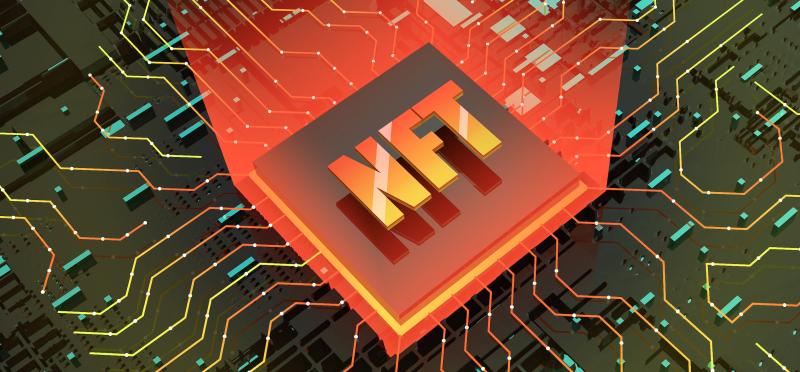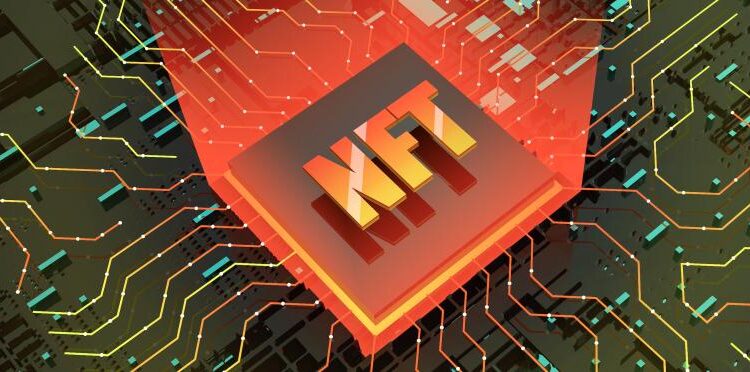NFTs in finance are changing fast. In 2025, they’ve evolved from digital collectibles into assets used for collateral, fractional investment, and tokenized ownership of real-world goods. Major institutions, including HSBC, Citi, and Franklin Templeton are piloting tokenized securities using NFT-like blockchain frameworks, while regulators are defining how digital ownership fits within financial systems.
Key Takeaways
-
NFTs have matured into financial assets powering lending, staking, and tokenized ownership.
-
Fractional NFTs open access to high-value assets such as art, real estate, and intellectual property.
-
Regulators are reviewing NFT-linked assets that resemble securities.
-
NFT staking offers passive income opportunities but carries liquidity and tax risks.
-
Tokenized real-world assets (RWAs) are connecting blockchain finance with tangible value.
How NFTs Are Used in Finance
From Collectibles to Collateral
NFTs are redefining how digital ownership interacts with money. Platforms such as NFTfi, Arcade, and BendDAO now allow users to borrow stablecoins against valuable NFTs rather than selling them. This type of NFT-backed lending shows how tokens once tied to art or collectibles are evolving into financial instruments.
The rise of financial NFTs reflects a broader trend in decentralized finance (DeFi). These tokens often include embedded royalties, access rights, or governance features. They serve as collateral in lending protocols and as programmable proof of ownership within broader digital ecosystems.
Institutions Testing Tokenized Securities
Institutions are also taking notice. Banks and asset managers are experimenting with tokenized bonds and digitized securities using blockchain standards such as ERC-1400 and ERC-3643.
While these instruments are not traditional NFTs, they often utilize similar infrastructure—blockchain standards for transparency, programmability, and verifiability.
The key distinction lies in their regulatory purpose: tokenized securities are explicitly designed to comply with financial regulations, whereas NFTs were originally created for digital uniqueness and ownership.
While these aren’t conventional NFTs, they share similar infrastructure for transparency and interoperability. Institutional participation remains early, but the groundwork for crossovers between Web3 and traditional finance is being laid.
What Are Fractional NFTs?
How Fractionalization Works
Fractional NFTs take a single high-value token—often representing an artwork, property, or collectible—and divide it into smaller ownership shares. This approach makes participation in premium assets possible for more investors.
Here’s how it works:
-
A smart contract locks the original NFT and issues fungible ERC-20 tokens that represent partial ownership.
-
Investors can trade these fractions on secondary markets.
-
Governance or profit-sharing rights can be built into the contract, allowing collective decision-making.
Benefits and Regulatory Risks
Projects like Otis, Particle, and RealT have already used this model for art, real estate, and intellectual property.
However, regulators such as the SEC and FCA have signaled that fractional NFTs may fall under securities law—particularly when marketed with profit potential. As such, compliance with existing financial regulations becomes necessary.
Fractionalization is democratizing investment—but it also blurs the line between digital collectibles and regulated financial products.

Can NFTs Represent Real-World Assets?
How Tokenized Assets Work
The connection between NFTs and real-world assets (RWAs) has become one of the most promising frontiers. By representing verified ownership of tangible assets such as real estate, commodities, or collectibles, NFTs make traditionally illiquid markets more accessible.
-
Verification: Licensed custodians confirm and hold the real asset before an NFT is minted to represent it.
-
Liquidity: Owners can trade or fractionally sell NFT representations of their holdings.
-
Transparency: Each transaction is permanently recorded on the blockchain.
Institutional and Compliance Models
Projects such as Backed Finance, Centrifuge, and RealT have pioneered tokenized property and income-generating assets. For heavily regulated instruments like corporate bonds, frameworks such as ERC-1400 are typically used instead of standard NFT contracts to ensure compliance.
This hybrid structure—off-chain verification and on-chain representation—is laying the foundation for a more transparent and globally accessible financial system.
What Is NFT Staking?
Leading Platforms and Use Cases
NFT staking lets holders lock their assets on platforms in exchange for rewards. These rewards often come as governance tokens, a share of platform fees, or in-game items.
Staking connects DeFi and GameFi, turning static NFTs into productive assets. In some ecosystems, staked NFTs unlock gameplay features or yield tokens linked to marketplace activity.
Risks and Tax Implications
While the potential returns can be attractive, the risks are real. Liquidity issues, market volatility, and shifting token values can quickly impact yield. In several regions, staking rewards are now classified as taxable income—another sign of NFT finance moving into mainstream regulation.
Are NFTs Taxable?
Global Rules and Reporting Frameworks
Yes. NFTs are generally treated as capital assets or digital property, meaning any profit from selling, swapping, or earning yield on them can trigger tax obligations.
In the U.S., the IRS taxes NFT profits under existing cryptocurrency rules, with certain collectibles like art or gems taxed at higher rates of up to 28 percent. Globally, the OECD’s Crypto-Asset Reporting Framework (CARF), implemented in 2025, extends cross-border tax data sharing to NFTs.
Recordkeeping for Investors
Tracking valuation across multiple wallets remains challenging, but compliance tools are improving. As reporting frameworks tighten, accurate recordkeeping will become a core part of NFT investing.
Are NFTs Considered Securities?
What Regulators Look For
The answer depends on structure and intent. Regulators such as the SEC, FCA, and ESMA apply traditional securities criteria—like the Howey Test—to determine whether an NFT constitutes an investment contract.
Fractional or profit-sharing NFTs are most likely to fall within securities law.
Oversight Under SEC and MiCA
The SEC has already launched several investigations into NFT issuers that offered financial returns without proper registration. In the EU, the MiCA regulation (effective December 2024) enforces disclosure, anti-money-laundering compliance, and advertising standards for digital assets.
The message is clear: any NFT that promises returns or pooled profits must meet financial compliance requirements. For creators and investors, understanding those boundaries is now a prerequisite.
Criticism and Risks
Fraud and Volatility
NFT finance continues to evolve, but not without obstacles. Chainalysis’s 2025 Web3 Report highlights persistent fraud, wash trading, and counterfeit NFT activity.
Market Correction and Sustainability
DappRadar’s Q2 2025 NFT Market Report shows a roughly 11 percent year-over-year decline in marketplace revenue—evidence of a maturing, less speculative market.
Energy concerns have eased thanks to proof-of-stake blockchains, but volatility still challenges valuation. The recent downturn has prompted a shift toward cleaner, regulated, and transparent models that prioritize user trust and sustainability.
Future Outlook: NFT Finance in 2026 and Beyond
NFT 3.0 and Smart Tokenization
NFT finance is moving toward regulated tokenization, cross-chain interoperability, and smarter valuation models. The next phase—often called NFT 3.0—will blend identity, compliance, and financial logic.
Institutional Adoption and AI Valuation
Emerging trends include:
-
RWA tokenization: Expanding access to tangible assets through compliant NFT frameworks.
-
Institutional participation: Supported by regulatory clarity from MiCA and CARF.
-
AI-assisted valuation: Platforms are experimenting with machine-learning models to estimate fair market prices.
-
Cross-chain liquidity: Standards linking Ethereum, Polygon, and Avalanche are improving asset mobility and trading depth.
NFTs are maturing from speculative digital art into verified financial instruments. By 2026, they’ll serve as essential tools for ownership, capital formation, and digital identity across both decentralized and traditional finance.
Frequently Asked Questions
Here are some frequently asked questions about this topic:
Are NFTs in finance safe?
They’re becoming safer as regulation and technology advance, but market risks and scams still exist.
Can NFTs replace traditional securities?
Not yet. Regulated securities rely on specific token standards, but NFTs are influencing that transition.
What’s the difference between staking and fractional NFTs?
Staking generates rewards by locking NFTs, while fractional NFTs divide ownership into smaller tradable units.
Do I have to report NFT income on my taxes?
Yes. NFT transactions—including staking and resale profits—are taxable under frameworks like the OECD’s CARF.
Will NFTs still matter in 2026?
Absolutely. As tokenized assets and compliance systems mature, NFTs will underpin much of digital finance’s next phase.
If this article, video or photo intrigues any copyright, please indicate it to the author’s email or in the comment box.

